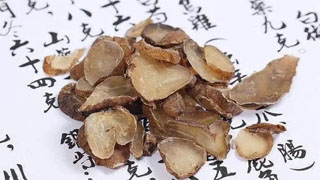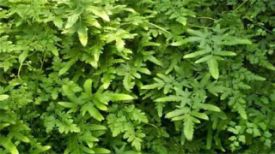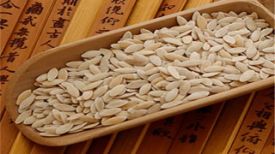
1. Alias
Side Son, Tiger Palm, Mature White Fuzi, Black Fuzi, Mingfu Pian, Diaofu, Sichuan Fuzi.
2. Plant morphology
Perennial herb. The main root is spindle shaped or inverted, usually with two connected roots. In cultivated varieties, there are often several enlarged lateral roots (sub roots) around the main root. The stem is upright, measuring 60-150 centimeters in height, with sparse short hairs that curl upwards in the middle. It has equidistant leaves and branches. The lower leaves of the stem wither during the flowering period. Intergrowth of leaves in the middle of the stem; Leaves are leathery or papery, pentagonal in shape, 6-11 cm long and 9-15 cm wide, with a shallow heart-shaped base, palmate with three or three deep fissures reaching near the base. The central lobe is often wide diamond shaped, with a sharp tip at the top, sometimes divided into nearly feather like segments. The secondary lobes are oblique triangular, and the lateral lobes are unevenly divided into two deep fissures. The surface is sparsely covered with short hairs, and the back is often sparsely covered with short hairs along veins; The petiole is 1-2.5 centimeters long and sparsely covered with short hairs. The terminal inflorescence is 6-25 centimeters long, and the inflorescence axis and peduncle are densely covered with short hairs that are inverted and closely attached; There are small bracteoles in the middle or lower part of the flower stem; Calyx petals 5, blue purple, covered with short hairs on the outside; The upper sepals are helmet shaped, 2-2.6 cm high, with an indistinct beak, and the lateral sepals are 1.6-2 cm long; Petals 2, hairless, petals about 11 millimeters long, lips about 6 millimeters long; Slightly concave, with a distance of 1-2.5 millimeters, usually rolled in fists; Stamens numerous, hairless or sparsely covered with short hairs; Heart skin 3-5, separated. The follicles are 1.5-1.8 centimeters long; The seed is triangular in shape, measuring 3-3.2 millimeters in length, with dense transverse membranous wings on only two sides. The flowering period is from June to August, and the fruiting period is from August to October.
3. Origin distribution
Born on mountain grassy slopes, shrubs, and forest edges. Distributed in Yunnan, Sichuan, Hubei, Guizhou, Hunan, Guangxi, Guangdong, Jiangxi, Zhejiang, Jiangsu, Anhui, Shaanxi, Henan, Shandong, Liaoning and other provinces and regions. Sichuan and Shaanxi are the main cultivation areas, and the main root (mother root) of cultivated products is processed into Sichuan black, while the lateral root (daughter root) is processed into aconite.
4. Harvesting and processing
From late June to early August, after removing the mother roots, fibrous roots, and sediment, it is commonly known as "mud aconite" and processed into the following specifications: (1) Select a large and uniform mud aconite, wash it, immerse it in a solution of edible gall bladder water overnight, and then add salt. Continue soaking, take it out and dry it daily, gradually extending the drying time until a large number of crystalline salt particles (salt frost) appear on the surface of the aconite and the body becomes hard, commonly known as "salt aconite". (2) Take mud aconite and wash it according to size. Soak it in an aqueous solution of edible gallbladder for several days, boil it with the soaking solution until it penetrates the heart, remove it, float it in water, cut it vertically into slices about 0.5 cm thick, soak it in water, dye the aconite into a strong brown color with a coloring solution, take it out, steam it until an oily surface and luster appear, dry it to half dry, then dry it in the sun or continue drying it, commonly known as "black smooth slices". (3) Select evenly sized mud aconite, wash it, immerse it in a water solution of edible gallbladder for several days, boil it with the soaking solution until it penetrates the heart, remove it, peel off the outer skin, cut it vertically into slices about 0.3 centimeters thick, soak it in water, take it out, steam it through, and dry it in the sun, commonly known as "white aconite slices".
5. Characteristics of medicinal herbs
Salt aconite: conical in shape, measuring 4-7 centimeters in length and 3-5 centimeters in diameter. The surface is gray black, covered with salt frost, with concave bud marks at the top and nodular protrusions or root marks around it. Weight, gray brown cross-section, visible small gaps filled with salt frost and polygonal formation of layered rings, with irregular arrangement of duct bundles inside the rings. Qi is weak, the taste is numbing, and it pricks the tongue. Salt aconite: It is a longitudinal slice, wide at the top and narrow at the bottom, measuring 1.7-5 centimeters in length, 0.9-3 centimeters in width, and 0.2-0.5 centimeters in thickness. The outer skin is black brown, the cut surface is dark yellow, oily and glossy, semi transparent, and has longitudinal guide tubes. Hard and brittle in texture, with a keratinous cross-section. The air is faint and the taste is light. White patches: no outer skin, yellow white, semi transparent, about 0.3 centimeters thick.
6. Sexual Taste Returning to the Classics
Hot in nature, spicy and sweet in taste, and highly toxic. Guixin Meridian, Kidney Meridian, Spleen Meridian.
7. Effect and Function
Returning to yang to relieve rebellion, replenishing fire to assist yang, dispersing cold and relieving pain. Belonging to Wenli medicine.
8. Clinical application
Use 3-15 grams, fry first and then fry for a long time. Used for Yang deficiency, cold limbs, weak pulse, insufficient heart yang, chest pain and discomfort, cold vomiting and diarrhea, abdominal pain and coldness, kidney yang deficiency and weakness, impotence, uterine cold, yin cold and edema, external sensation of Yang deficiency, and cold dampness and pain.
9. Pharmacological research
Strong heart; Anti myocardial ischemia; Anti shock; Inhibiting coagulation function and anti thrombotic formation; Anti-inflammatory; Analgesia; Local anesthesia; Enhance humoral immunity; Stimulate spontaneous contraction of the intestinal tract and inhibit gastric emptying; Relieve asthma and relax the trachea; Has anti smooth muscle spasm and other effects.
10. Chemical composition
Fuzi contains aconitine, aconitine, aconitine, talaconitine, and aconitine, which are racemic demethylated Hengzhou aconitine, palmatine chloride, isofeicao alkaloid, benzoyl aconitine, neo wuning alkaloid, Fuzinining alkaloid, North aconitine, Duogan aconitine, Deoxyaconitine, Fuziting alkaloid, Zhuge aconitine uracil, Jiangyou aconitine, neo Jiangyou aconitine, demethylated pigweed alkaloid, Fuzi glycoside, etc.
11. Usage taboos
Yin deficiency and Yang excess, true heat and false cold, and pregnant women are prohibited from taking it. When taking medicine, it is not advisable to drink alcohol or use Baijiu as a guide. Not suitable for use with Pinellia ternata, Gualou, Tianfen, Fritillaria cocos, Magnolia officinalis, and Atractylodes macrocephala.
12. Compatibility prescription
① For the treatment of vomiting, sweating, fever, chills, limb tightness, and cold hands and feet: 60g of licorice (roasted), 45g of dried ginger, and one piece of aconite (raw, peeled, broken into eight pieces). Add three flavors, boil three liters of water, take one liter and two blends, and remove impurities. Take it at a different temperature. (Treatise on Cold Damage: Sini Decoction)
② For treating children's diarrhea: 15g of aconite, 30g of wolfberry meat, and 30g of focal earth. Above is the end. Chen Mi Mu Wan, as big as millet, is served under clear rice soup. ("Records of the Transmission of Acne and Eruption" with He Wan attached)
③ Treating nausea and vomiting: one large aconite and one ginger (fine file). Boil and grind like batter, then drink the rice. (Experience Formula)
④ Treating toothache caused by yin deficiency: grinding the powder of raw aconite, adjusting the mouth fluid and applying it to the hearts of both feet, extremely effective. (The Secret Biography of Hua Tuo's Divine Physician)
⑤ Treatment for stroke induced coldness: 0.3g of raw aconite and 0.15g of wood fragrance. Take a fine file, 1.5 grams per serving, two slices of ginger, and fry. (Pu Ji Fang Fu Zi San)
⊙ The content of the article is for clinical reference only. Non TCM professionals are not allowed to test drugs.


